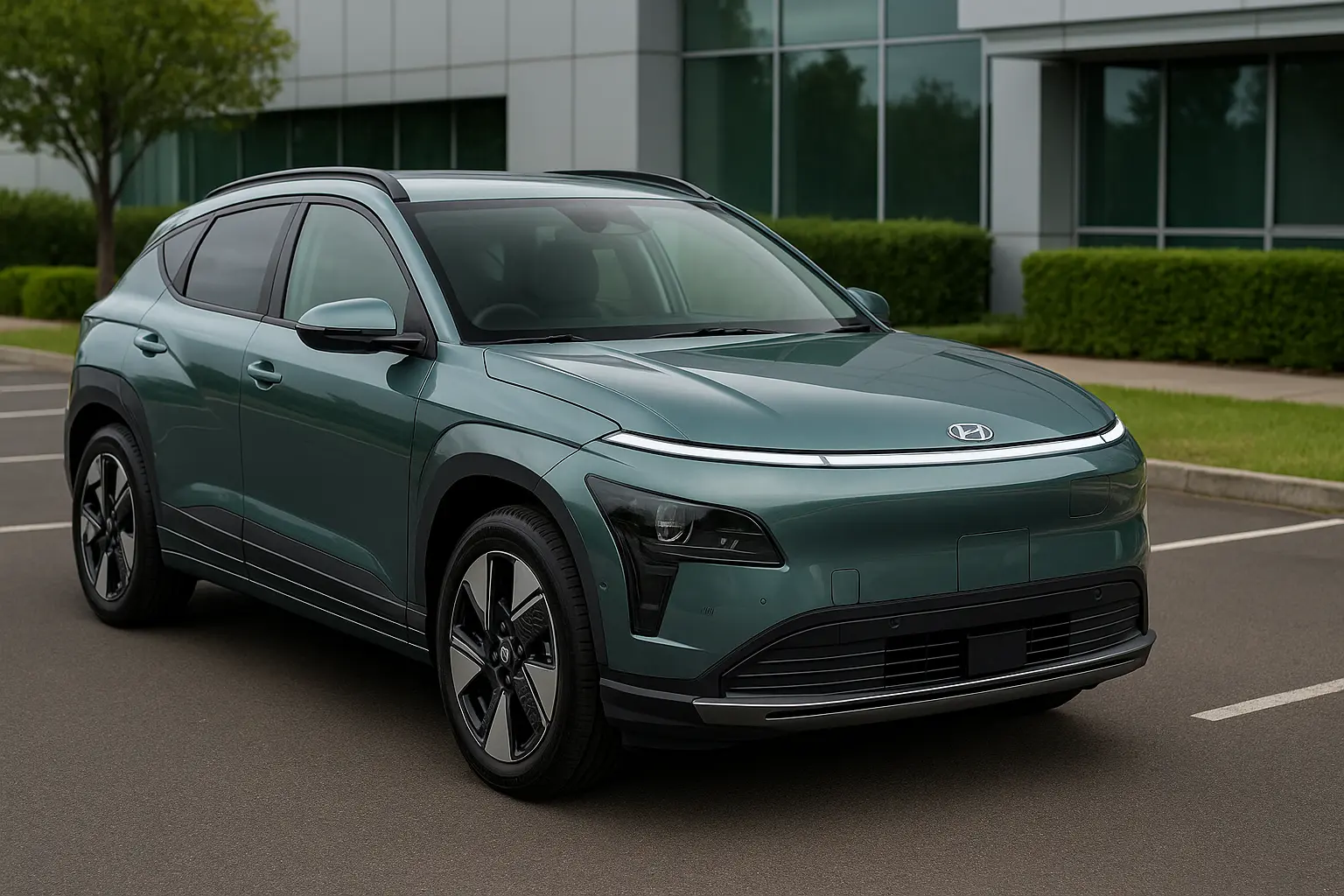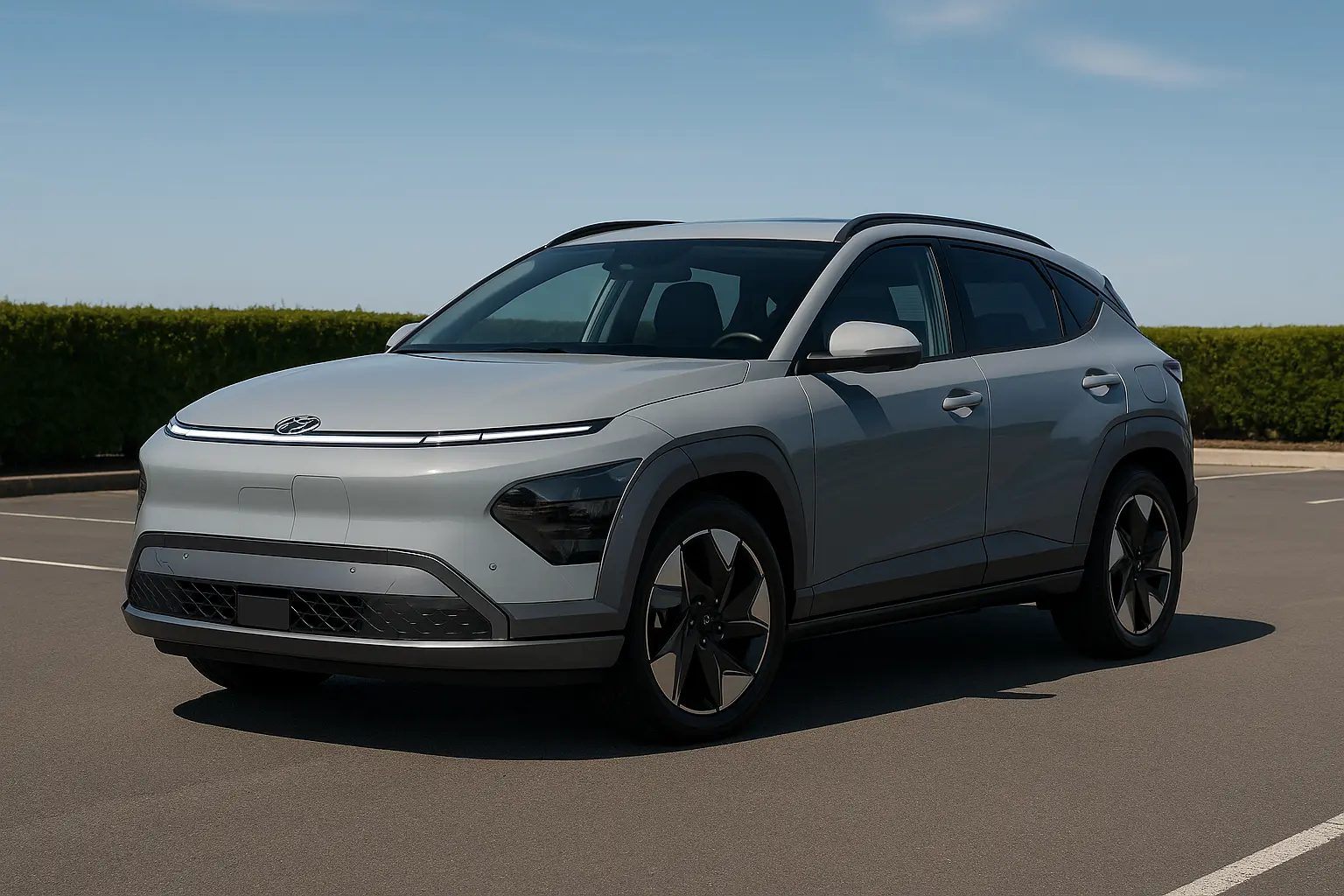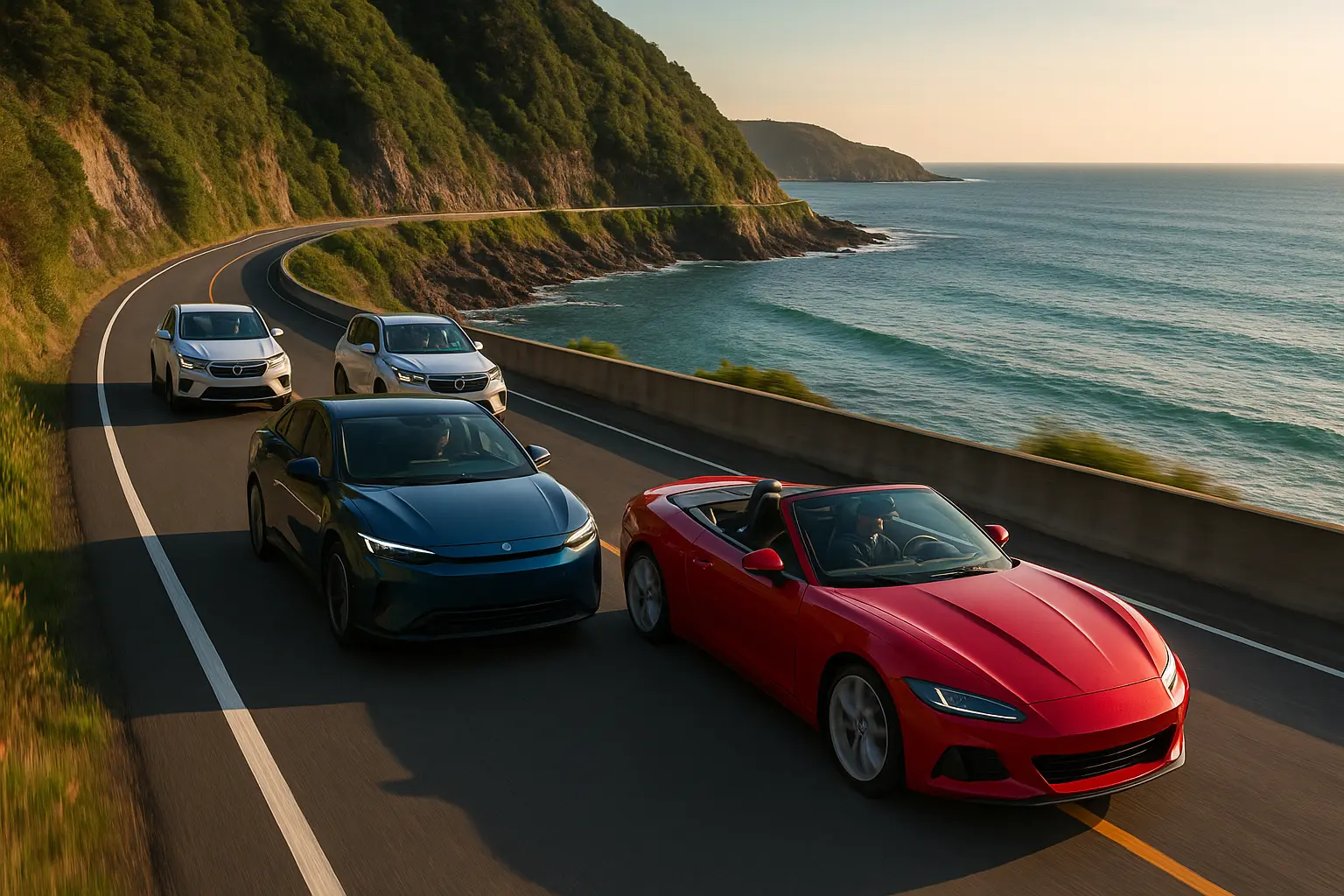The Hyundai Kona Electric has always been a popular choice among Australians seeking a practical, stylish, and eco-friendly small SUV. For 2025, Hyundai has given it a major overhaul, delivering more range, technology, comfort, and design flair than ever before. The result is a compact EV that feels more premium, more refined, and more suited to the growing electric market Down Under.
In this comprehensive review, we’ll break down everything you need to know about the 2025 Kona Electric — from its exterior redesign and upgraded interior, to its battery tech, performance, safety, and how it stacks up against rivals.

A Fresh Look – Modern, Aerodynamic Styling
Hyundai’s design evolution for the 2025 Kona Electric is immediately noticeable. The new model adopts a more futuristic, streamlined appearance with smoother lines, a closed grille, and a unique pixel-style lighting signature inspired by the brand’s Ioniq lineup.
- Front end: Sleek LED headlamps stretch across the nose, giving the Kona a wider stance. The aerodynamic front bumper reduces drag while still retaining a sporty edge.
- Profile: A slightly longer wheelbase and subtle sculpting improve visual proportions while creating more cabin space.
- Rear design: The pixel-inspired tail lights mirror the front lighting theme, while the tailgate offers a cleaner, uncluttered look.
The refreshed styling isn’t just about aesthetics — it plays a role in boosting efficiency, with aerodynamic tweaks helping to reduce wind resistance and extend driving range.
Interior – Space, Comfort, and High-Tech Features
Inside, the 2025 Kona Electric feels significantly more spacious and sophisticated. Hyundai has clearly taken cues from its larger EV siblings, delivering a cabin that feels airy and modern.
- Cabin space: Thanks to the longer wheelbase, rear passengers now get more legroom. The flat floor design also creates a more open feel.
- Dashboard layout: Dual 12.3-inch displays form a wide, curved panel — one for the digital driver cluster and another for the infotainment system.
- Materials: Soft-touch finishes, premium fabric or leatherette options, and sustainable materials give the cabin a high-quality feel.
- Storage: Improved boot space and cleverly designed compartments make the Kona Electric more practical for everyday use.
Tech lovers will appreciate features like over-the-air (OTA) software updates, wireless Apple CarPlay and Android Auto, voice recognition, and ambient mood lighting.
Battery and Range – More Kilometres Between Charges
One of the biggest improvements for 2025 comes under the skin. Hyundai has increased battery capacity and improved efficiency.
- Battery options: Two packs are available — a standard range 48.6 kWh and a long-range 65.4 kWh.
- Range: The long-range version can travel up to approximately 490 km (WLTP) on a single charge, while the standard pack offers around 370 km.
- Charging: DC fast charging allows a 10% to 80% top-up in around 43 minutes for the larger battery, making road trips more feasible.
These figures put the Kona Electric at the top end of the small EV segment, appealing to buyers concerned about range anxiety.
Performance – Smooth, Quiet, and Confident
The 2025 Kona Electric may be a small SUV, but it delivers a confident and refined drive.
- Power: Standard models produce 114.6 kW, while the long-range version bumps this to 150 kW.
- Torque: A healthy 255 Nm of instant torque gives brisk acceleration, particularly in city traffic.
- Ride and handling: The suspension strikes a nice balance between comfort and composure, while the low-mounted battery pack lowers the centre of gravity for better cornering stability.
- Driving modes: Eco, Normal, Sport, and Snow settings tailor the Kona’s behaviour to different conditions.
Noise levels are impressively low thanks to additional sound insulation and the inherently quiet nature of EV powertrains.
Safety – Hyundai’s Latest SmartSense Suite
Hyundai continues to lead in the safety department, and the 2025 Kona Electric is no exception. It comes with the brand’s latest SmartSense driver assistance package as standard.
Key safety features include:
- Forward Collision-Avoidance Assist with pedestrian and cyclist detection
- Lane Keeping Assist and Lane Following Assist
- Blind-Spot Collision-Avoidance Assist
- Smart Cruise Control with stop-and-go capability
- Rear Cross-Traffic Collision-Avoidance Assist
- Safe Exit Warning
A 360-degree camera and parking sensors make tight manoeuvres effortless, while high-strength body construction adds crash protection.
Technology – Smarter and More Connected
Hyundai has packed the 2025 Kona Electric with cutting-edge features to keep it competitive in the growing EV market.
- Infotainment: Crisp graphics, fast response, and intuitive menus make the dual-screen setup a joy to use.
- Navigation: EV-specific route planning suggests charging stops along your journey.
- Connectivity: OTA updates ensure the vehicle’s software stays up to date with the latest features and improvements.
- Head-up display: Projects key information onto the windscreen to minimise driver distraction.
Ownership Costs – Affordable to Run
While the Kona Electric’s purchase price may still be higher than a petrol SUV, running costs are significantly lower.
- Energy costs: Charging at home overnight is far cheaper than filling a fuel tank.
- Maintenance: With fewer moving parts, EVs require less servicing — no oil changes, fewer brake replacements, and reduced wear on components.
- Warranty: Hyundai backs the Kona Electric with a 5-year/unlimited-kilometre vehicle warranty and an 8-year/160,000 km battery warranty.
Government incentives for EV buyers in some Australian states may further sweeten the deal.
How It Compares – Rivals in the Compact EV Market
The 2025 Kona Electric faces competition from several small electric SUVs, but its blend of range, technology, and practicality makes it a strong contender.
- MG ZS EV – More affordable, but shorter range and less premium interior.
- BYD Atto 3 – Competitive pricing and range, but design may not appeal to all.
- Nissan Leaf e+ – Solid driving experience, though not an SUV and less modern inside.
- Peugeot e-2008 – Stylish, but pricier with shorter range.
The Kona Electric’s longer range and refined tech give it an edge, especially for buyers prioritising daily usability.
Verdict – A Strong Step Forward
The 2025 Hyundai Kona Electric delivers on its promise of being a small EV with big improvements. With its sleek new design, more spacious interior, extended range, and advanced safety tech, it’s a compelling choice for Australians looking to go electric without sacrificing practicality.
It’s not the cheapest EV in its class, but the extra spend brings premium-level refinement, impressive efficiency, and the reassurance of Hyundai’s proven reliability.
Final takeaway: If you want a compact SUV that’s future-ready, easy to live with, and enjoyable to drive, the 2025 Hyundai Kona Electric deserves a spot at the top of your shortlist.
Leave a comment
Your email address will not be published. Required fields are marked *




















